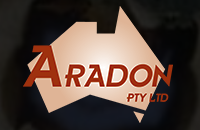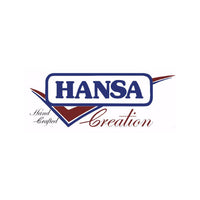This is our unofficial Australian Citizenship Test, see how well you understand the questions below, are you a True Blue Aussie?
1. Do you understand the meaning, but are unable to explain the origin of, the term ‘died in the arse’?
2. What is a “bloody little beauty”?
3. Are these terms related: chuck a sickie; chuck a spaz; chuck a U-ey?
4. Explain the following passage: ‘In the arvo last Chrissy the relos rocked up for a barbie, some bevvies and a few snags. After a bit of a Bex and a lie down we opened the pressies, scoffed all the chockies, bickies and lollies. Then we drained a few tinnies and Mum did her block after Dad and Steve had a barney and a bit of biffo.’
5. Macca, Chooka and Wanger are driving to Surfers in their Torana. If they are travelling at 100 km/h while listening to Barnsey, Farnsey and Acca Dacca, how many slabs will each person on average consume between flashing a brown eye and having a slash?
6. Complete the following sentences:
a) ‘If the van’s rockin’ don’t bother ?
b) You’re going home in the back of a ?
c) Fair crack of the ?
7. I’ve had a gutful and I can’t be fagged. Discuss
8. Have you ever been on the giving or receiving end of a wedgie?
9. Do you have a friend or relative who has a car in their front yard ‘up on blocks’? Is his name Bruce and does he have a wife called Cheryl?
10. Does your family regularly eat a dish involving mincemeat, cabbage, curry powder and a packet of chicken noodle soup called either chow mein, chop suey or kai see ming?
11. What are the ingredients in a rissole?
12. Demonstrate the correct procedure for eating a Tim Tam.
13. Do you have an Aunty Irene who smokes 30 cigarettes a day and sounds like a bloke?
14. In any two-hour period have you ever eaten three-bean salad, a chop and two serves of pav washed down with someone else’s beer that has been flogged from a bath full of ice?
15. When you go to a bring- your-own-meat barbie can you eat other people’s meat or are you only allowed to eat your own?
16. What purple root vegetable beginning with the letter ‘b’ is required by law to be included in a hamburger with the lot?
17. Do you own or have you ever owned a lawn mower, a pair of thongs, an Esky or Ugg boots?
18. Is it possible to ‘prang a car’ while doing ‘circle work’?
19. Who would you like to crack on to?
20. Who is the most Australian: Kevin ‘Bloody’ Wilson, John ‘True Blue’ Williamson, Kylie Minogue or Warnie?
21. Is there someone you are only mates with because they own a trailer or have a pool?
22. What does “sinkin piss at a mates joint” and “getten para” mean?
23. How far would you wear your mockies?
Inside only?
Back yard only?
To the letter box?
To the milk bar for a packed of winni blues?
To the movies?
To shoppo? (large shopping centre)
To the pub?

![[Blog Post] Funny Australian Place Names](http://www.australian-native.com.au/cdn/shop/articles/blog-funny-place-names_1024x1024.png?v=1495773745)
![[Blog Post] Information about Australia's Coat of Arms](http://www.australian-native.com.au/cdn/shop/articles/australian-coat-of-arms_1024x1024.gif?v=1495771638)
![[Blog Post] Australia & Europe Comparison Map](http://www.australian-native.com.au/cdn/shop/articles/blog-australia-europe-comparison-map_1024x1024.jpg?v=1495777881)
![[Blog Post] Historic Eureka Flag Information](http://www.australian-native.com.au/cdn/shop/articles/blog-eureka-flag_1024x1024.jpg?v=1495773535)
![[Blog Post] Australian Pavlova Recipe](http://www.australian-native.com.au/cdn/shop/articles/blog-recipe-pavlova_1024x1024.jpg?v=1495773239)
![[Blog Post] Australian Animal Facts - The Koala](http://www.australian-native.com.au/cdn/shop/articles/blog-koala-trivia_1024x1024.jpg?v=1495770921)



